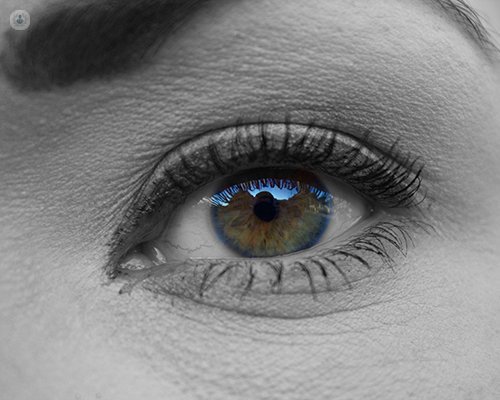Surgical Solutions eyestrain or presbyopia
Written by:The presbyopia is the progressive decline in the ability of the eye to focus closely because of the loss of elasticity of the lens. It appears in all people with advancing age, usually after 40 or 45 years.
Initial symptoms of presbyopia
 Initial and usual symptoms of eyestrain are the need to separate from what we are viewing and what we are staring to see clearly and have more light for nearby tasks.
Initial and usual symptoms of eyestrain are the need to separate from what we are viewing and what we are staring to see clearly and have more light for nearby tasks.
With presbyopia, the eye graduation, ie, the number of diopters to perfectly focus the light to far vision and near vision, they no longer match. This will be the time when the specialist in Ophthalmology start prescribing glasses or multifocal lenses or progressive, to not have to carry glasses always two different graduation.
Farsightedness and nearsightedness or farsightedness
Distance vision can also become worse with presbyopia if the patient has a hyperopic defect.
By contrast, a myopic delays deficiency symptoms of presbyopia, since the myopic eye at rest is focused on short distance. On these occasions, to read closely clearly myopic presbyopic be removed his glasses and put them back to focus well from afar.
Refractive surgery for presbyopia
Being a visual pathology with high incidence in the population, for years has tried to find definitive solutions to avoid the discomfort it causes.
Besides the use of glasses or multifocal contact lenses, one of the treatment options is refractive surgery. Over time, techniques which initially promised to have good results, they finally have been discarded, and conversely, others are being incorporated in recent years. Treatments have been suggested over the cornea using a laser to generate multifocal cornea with varying success, but in most cases the improvement of vision was accompanied by a worsening of farsightedness. This situation along with being irreversible, has meant that the acceptance has not been high.
Something similar is intended that the conductive keratoplasty through a thermal effect by radio wave, generates a change in curvature of the cornea and its dioptric power. The disadvantage of this technique is that it is usually temporary.
Some years ago Schachar technique, which involves incisions in the sclera and applying scleral implants but has been discarded by the reversal of the initial result is used soon.
Another surgical technique is monovision, in which a corrected eye for near vision and the other eye for distance is left. It must first check whether the person will be comfortable with this situation and can simulate contact lenses for a few days. Normally, the "dominant" for distance vision and the "non-dominant" eye is used for near. Not everyone is able to tolerate it, but it is one that is still currently being used with some frequency.
Another method is the intracorneal microlens implants or devices to optimize focus closely. These implants are relatively new and are advised for a single eye, and also distance vision suffers.
Finally, indicate that there are two types of intraocular lenses improve symptoms of presbyopia:
Pre-diffractive lenses other lens: they are placed in the space between the iris and lens. They have recently developed, so there are few published studies on them, but still the initial results are very promising, with the advantage of being a reversible technique.
Multifocal posterior chamber lenses: are placed behind the pupil after removing the lens, just as is done in cataract surgery. Are by far the most widely used in recent years, since its effect lasts for the rest of life, and the implantation technique, the same as that used with the falls, is the most common surgery that surgeons are more used to make. They also give a very high quality of vision and spectacle independence. They can also correct, in addition to presbyopia, any previous refractive error such as myopia, astigmatism or hyperopia. There are also specific multifocal intraocular lenses for implanting in the eye that have been previously cataract surgery. Thanks to them it is possible to gain independence from glasses far and near in the vast majority of patients.
It is important to note that all technical appointees serve to enhance or suppress the visual symptoms of presbyopia, but do not return to the elasticity of the lens eye as they had in youth, it really would be the perfect treatment for presbyopia.
Edited by Roser Berner Ubasos.


